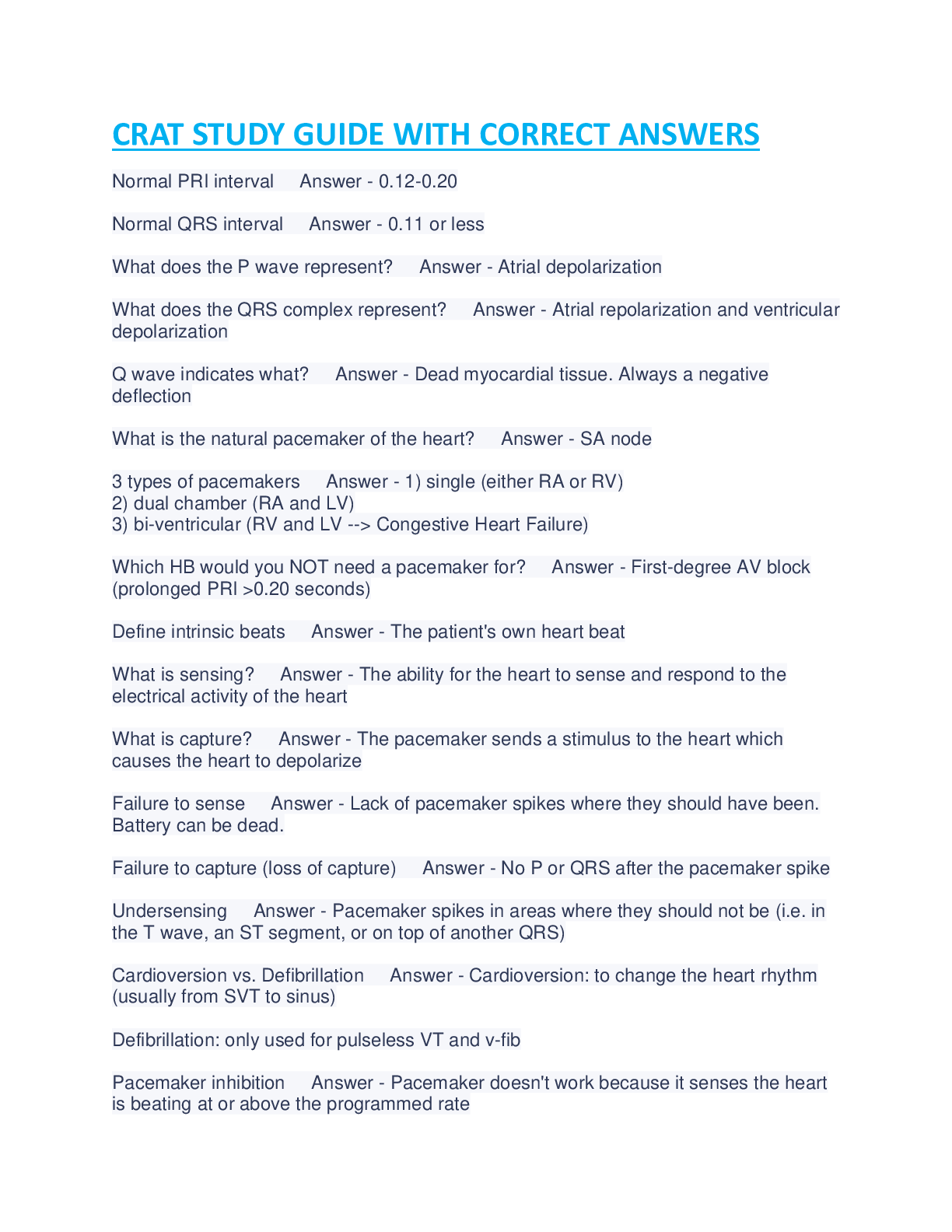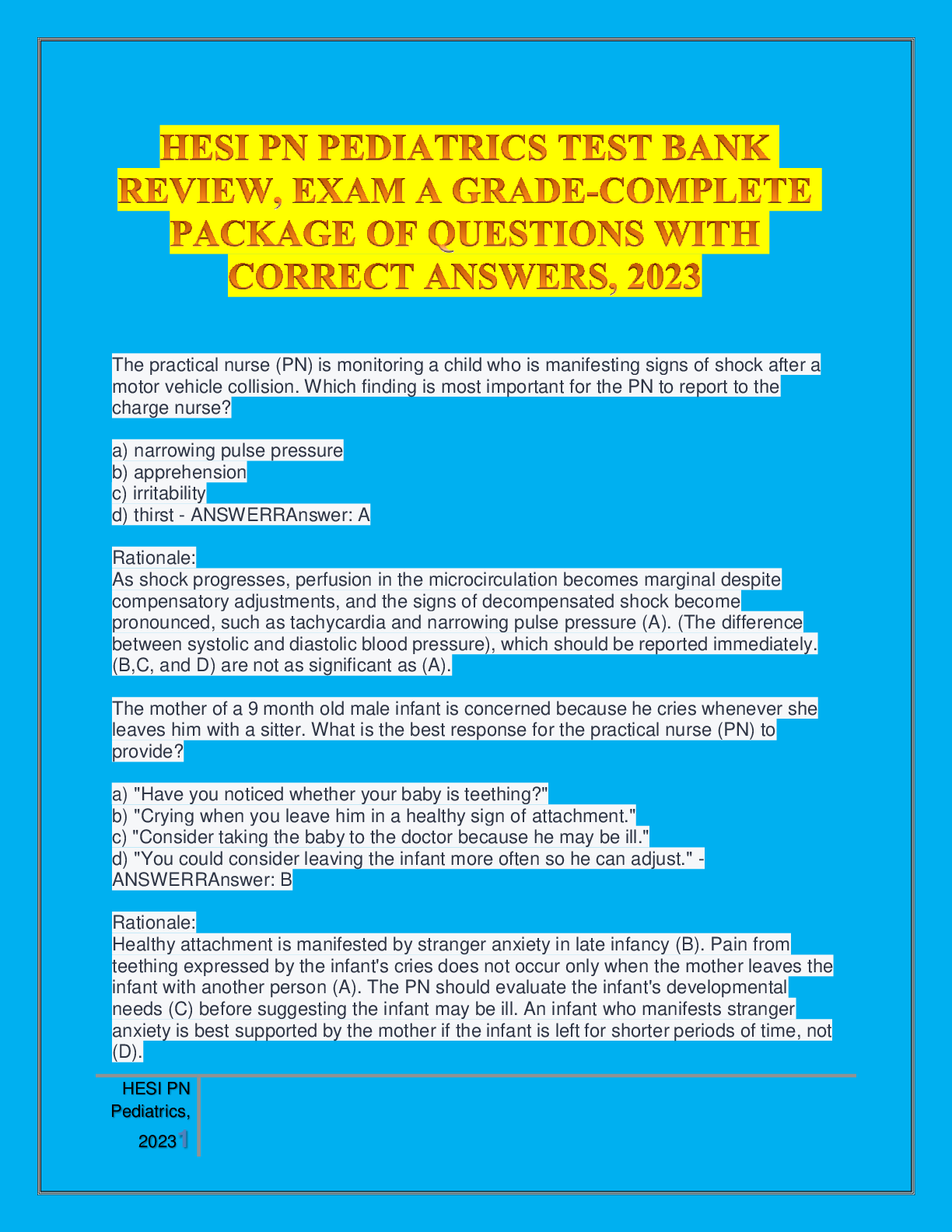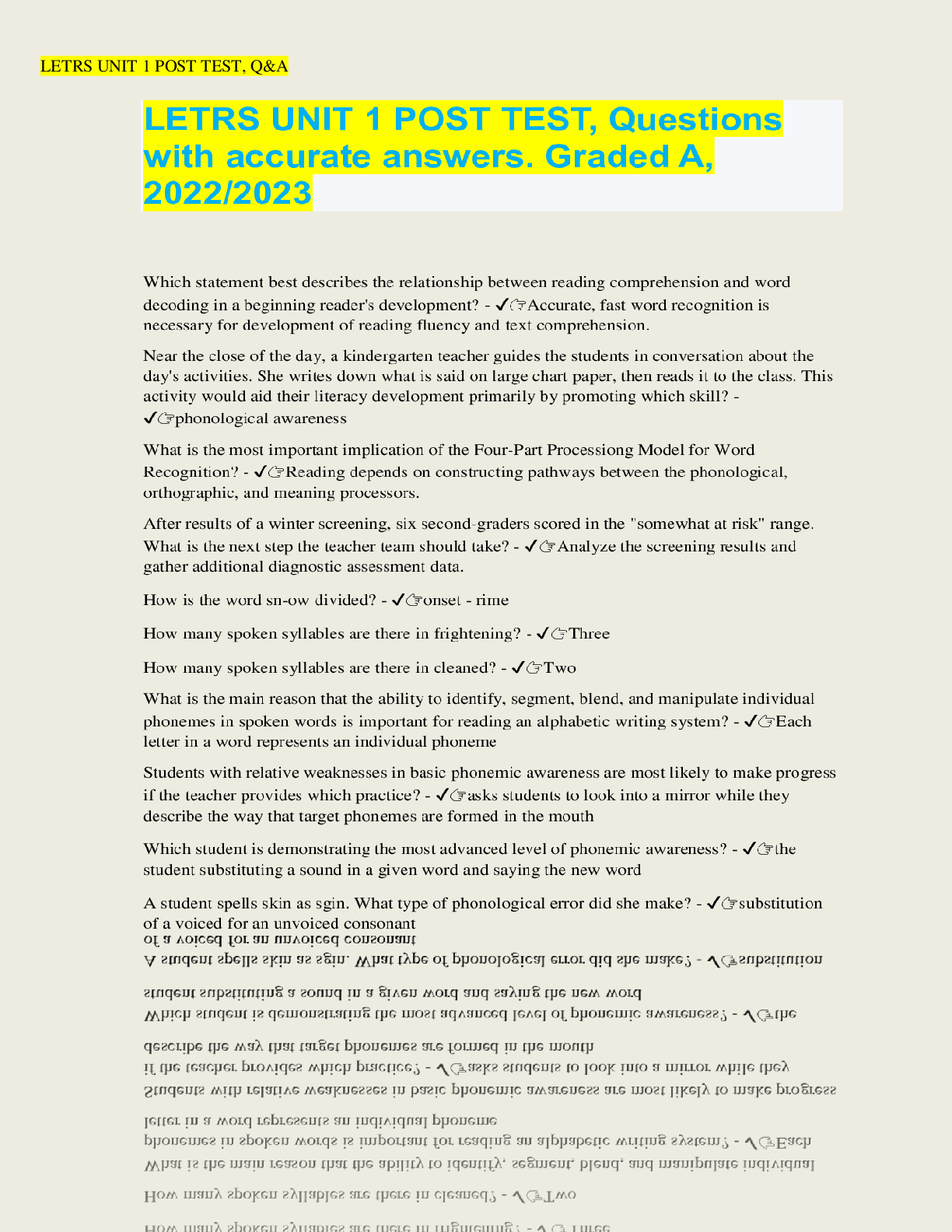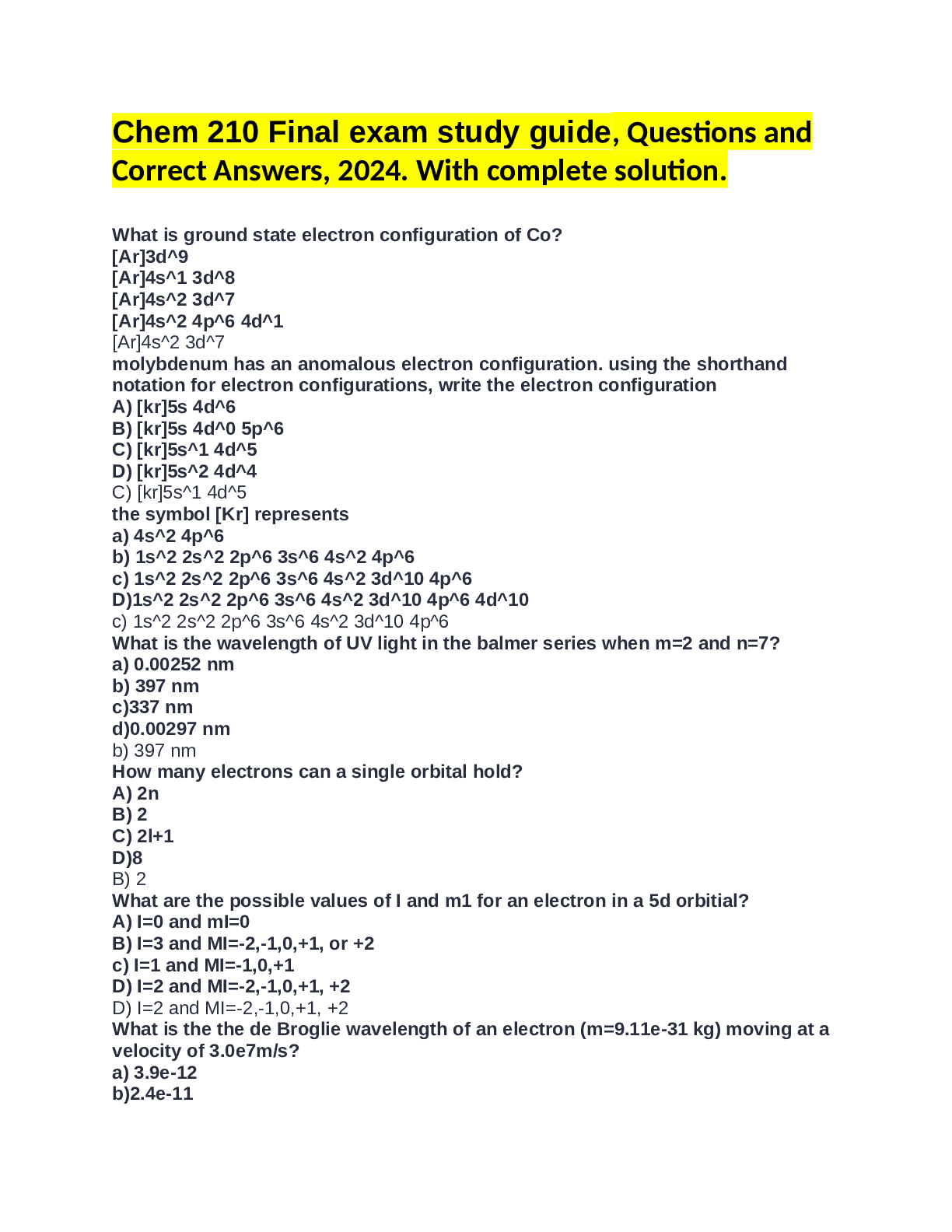EMT FISDAP > EXAM > FISDAP AIRWAY STUDY GUIDE, QUESTIONS WITH CORRECT ANSWERS, 2023 FILE 100/100 SCORE (All)
FISDAP AIRWAY STUDY GUIDE, QUESTIONS WITH CORRECT ANSWERS, 2023 FILE 100/100 SCORE
Document Content and Description Below
Alveolar air volume Correct ans - amount of air that reaches alveoli for gas exchange (approx. 350 ml. For adult male) Tidal volume minus dead space Dead air space Correct ans - anatomic dead space... are structures that hold air but but can't participate in gas exchange. Physiologic dead space are alveoli or capillaries destroyed by disease Expiratory reserve volume Correct ans - amount of gas that can be forcefully expired at the end of a normal expiration Inspiratory reserve volume Correct Ans - amount of gas that can be forcefully inspired in addition to a normal breaths tidal volume Internal respiration Correct ans - exchange of gases between blood cells and tissues Peak expiratory flow Correct ans - the greatest rate of airflow during forced expiration when lungs are fully inflated Residual volume Correct ans - after maximal forced exhalation, amount of air remaining not able to be expelled Tidal volume Correct ans - amount of air in a respiratory cycle (500 ml, 5-7ml/kg) Minute volume Correct ans - amount of gas moved in and out of respiratory tract per minute Air trapping Correct ans - a respiratory pattern associated with an obstruction in the pulmonary tree. Rate increases to overcome resistance. Angle of Louis Correct ans - angulation of the sternum that indicates the point where the second rib joins the sternum. (manubriosternal junction) Anoxia Correct ans - total lack of oxygen available to the tissues Apnea Correct ans - respiratory arrest Atelectasis Correct ans - abnormal condition characterized by collapse of alveoli, preventing exchange of CO2 and O2 in a part of the lungs Barrier device Correct ans - thin film of material placed on the patient's face used to prevent direct contact with the patient's mouth during PPV Carina Correct ans - where the trachea divides into right and left bronchi Ronchi Correct ans - rattling or rumbling in the lungs. Inspiration and expiration. Fluid in larger airways and may be cleared from a cough. Stridor Correct ans - harsh, high-pitched inspiratory sound best heard over the neck Rattles (ronchi) Correct ans - inflammation and mucus or fluid in larger airways heard on inspiration. Associated with bronchitis or pneumonia Crackles (rales) Correct ans - wet lungs - sounds like hair rolled in finger tips. fluid in smaller airways, crackling or popping sound on inspiration, sound that indicates presence of fluid in smaller airways Croup Correct ans - viral infection in upper airway that sounds like a seal bark Wheeze Correct ans - whistling sound heard on inspiration or expiration in pharynx, trachea, bronchi Biot's respirations Correct ans - irregular respirations and rate with periods of apnea from increased ICP, brain damage at medulla, DKA, and OD'ing Agonal respirations Correct ans - slow, shallow, irregular from anoxic brain injury Central neurogenic hyperventilation Correct ans - similar to kussmaul respirations, deep and rapid breathing from increased ICP [Show More]
Last updated: 1 year ago
Preview 1 out of 15 pages
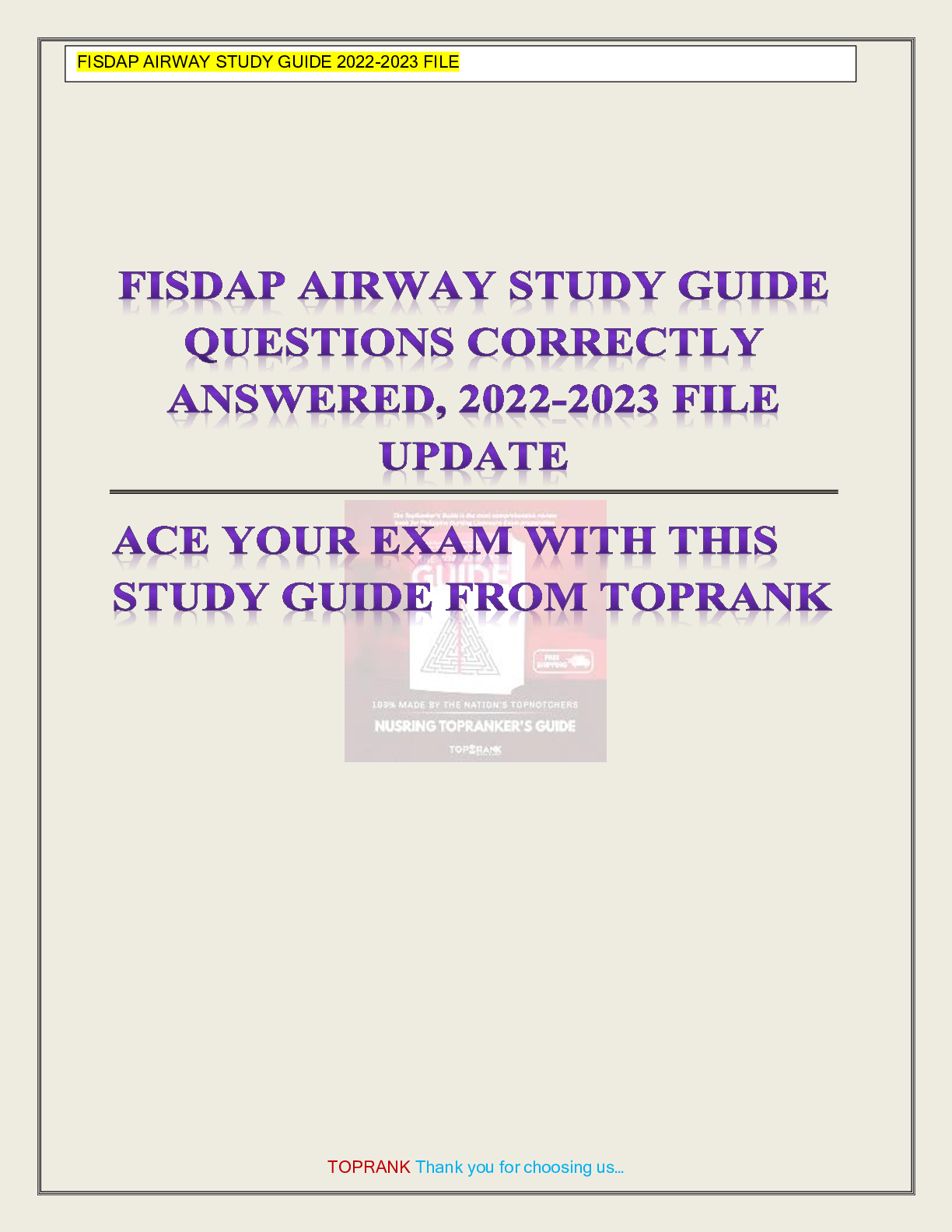
Buy this document to get the full access instantly
Instant Download Access after purchase
Buy NowInstant download
We Accept:

Reviews( 0 )
$9.50
Can't find what you want? Try our AI powered Search
Document information
Connected school, study & course
About the document
Uploaded On
Jul 07, 2023
Number of pages
15
Written in
Additional information
This document has been written for:
Uploaded
Jul 07, 2023
Downloads
0
Views
80


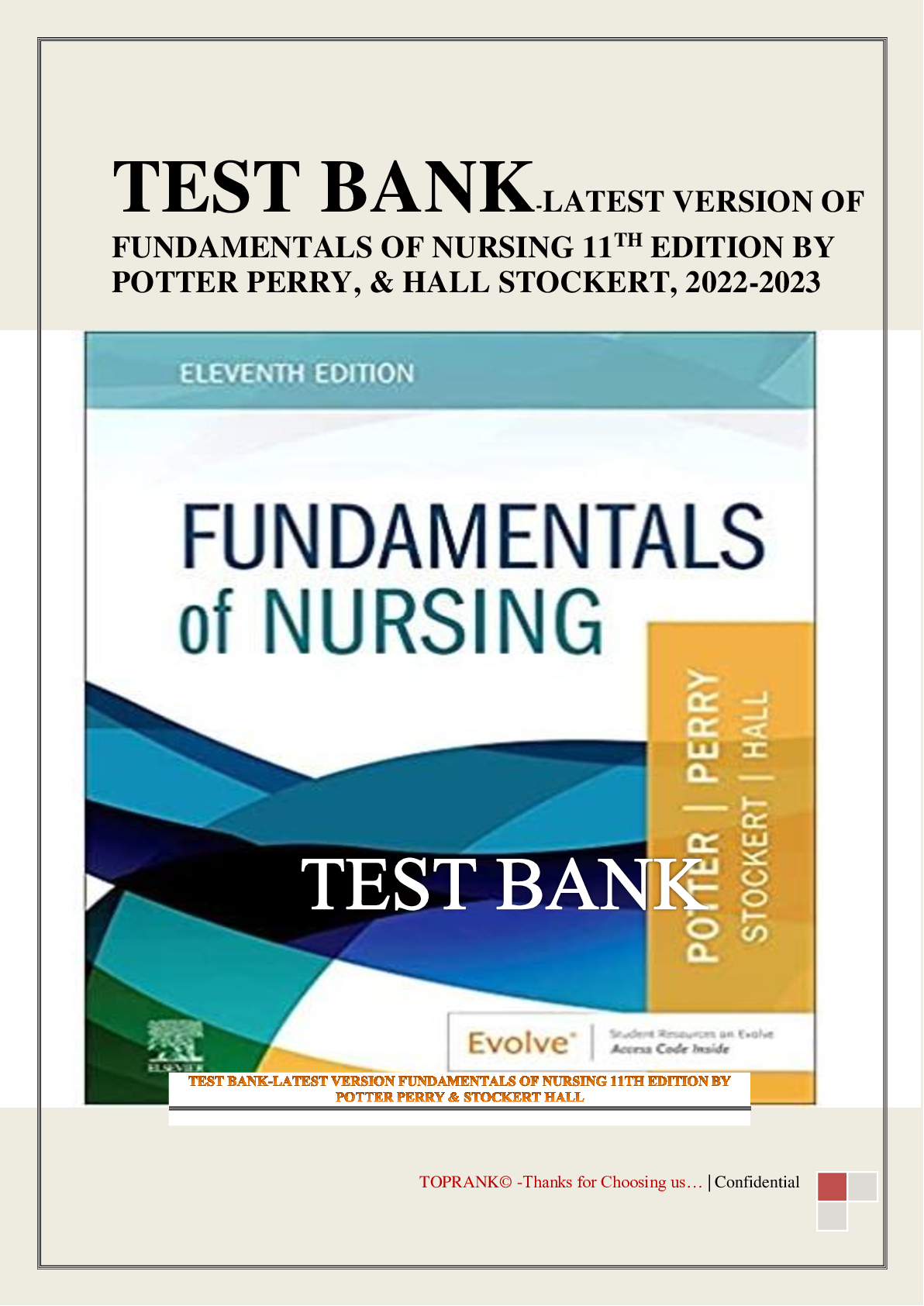
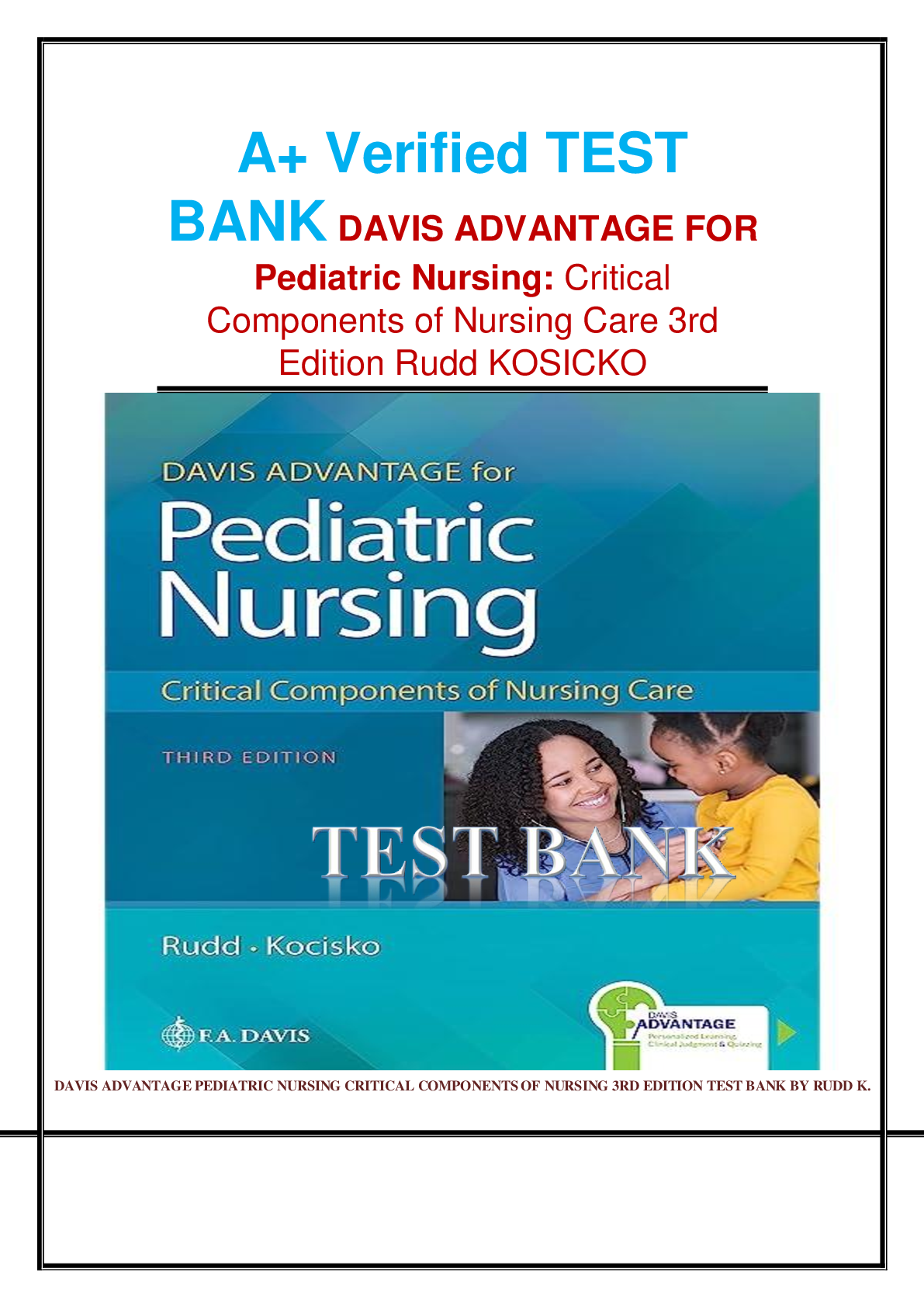

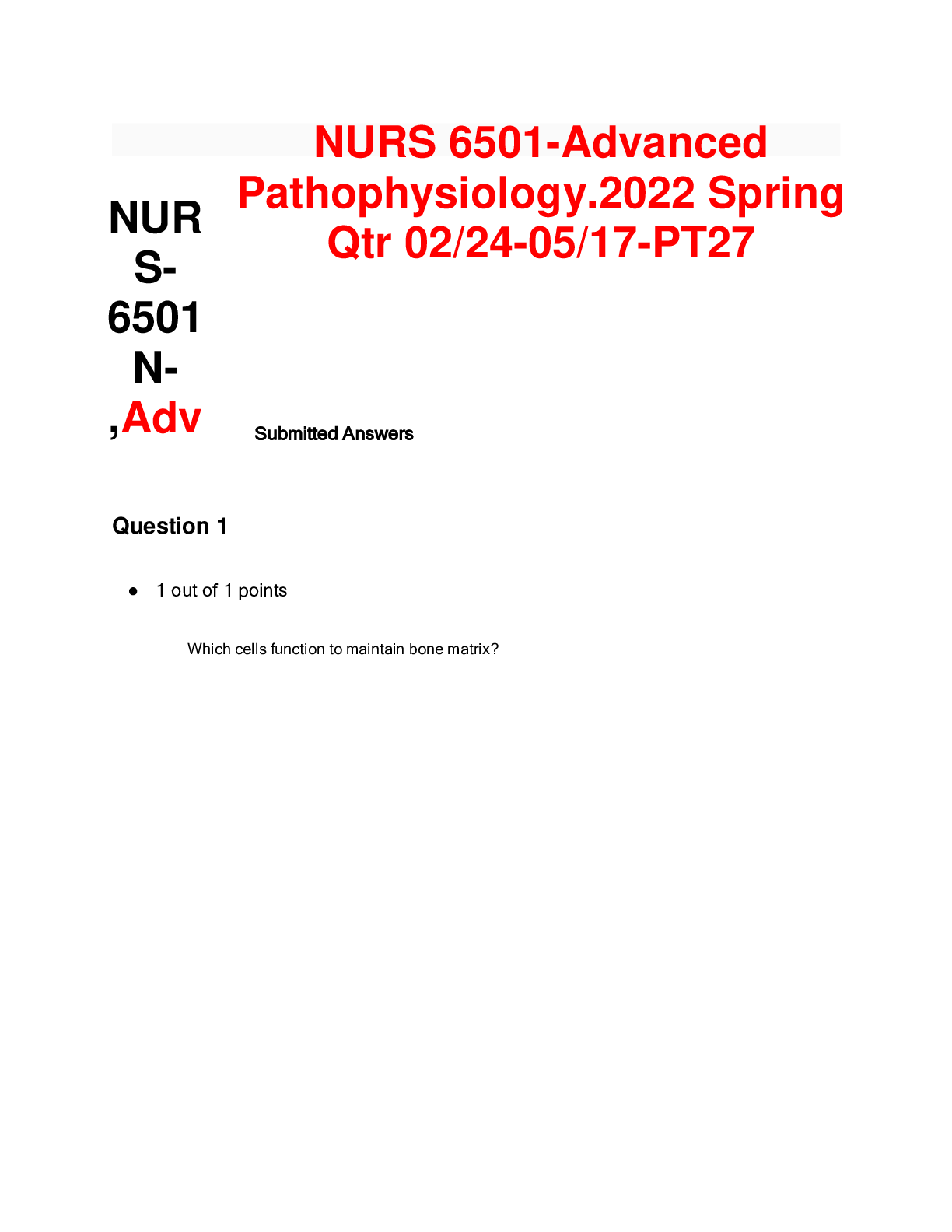

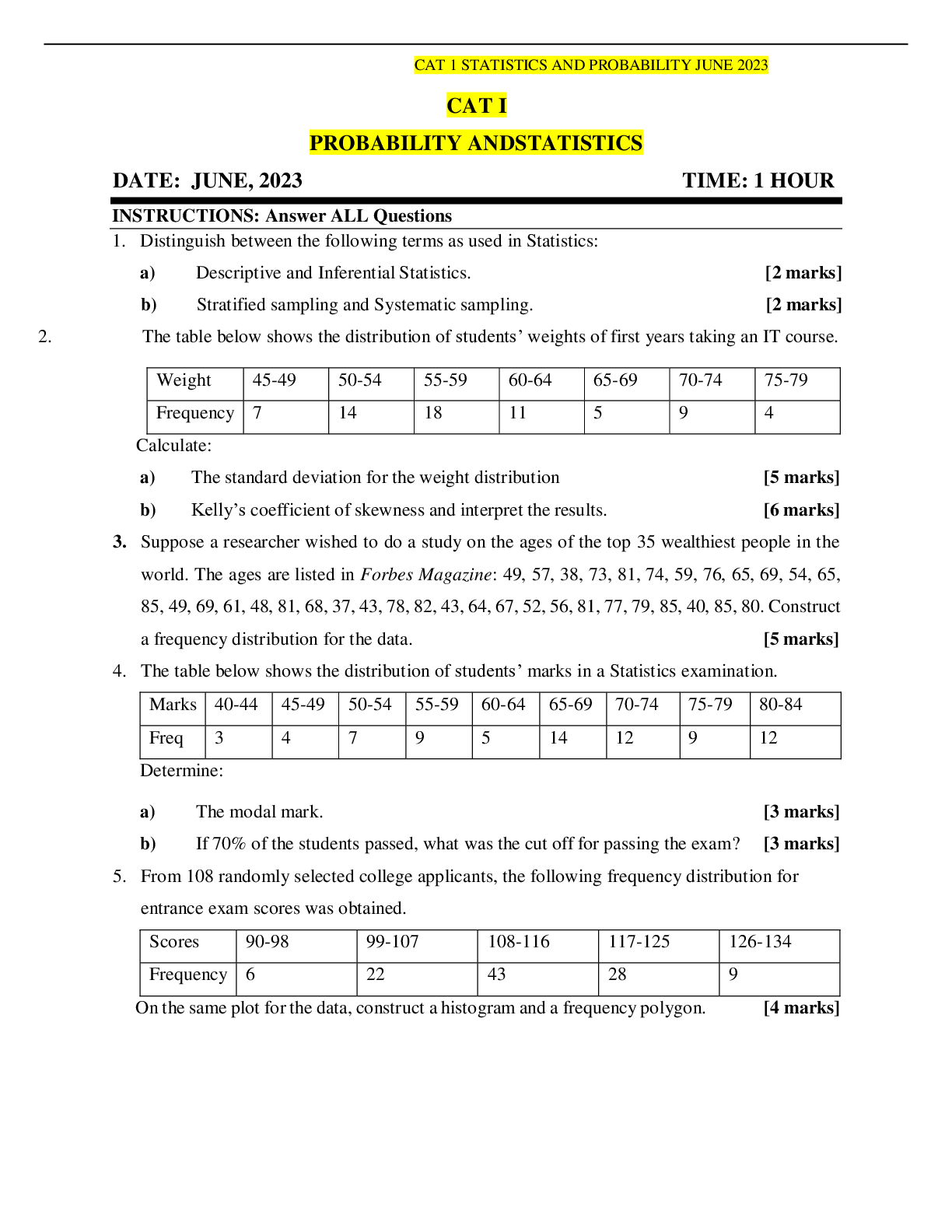

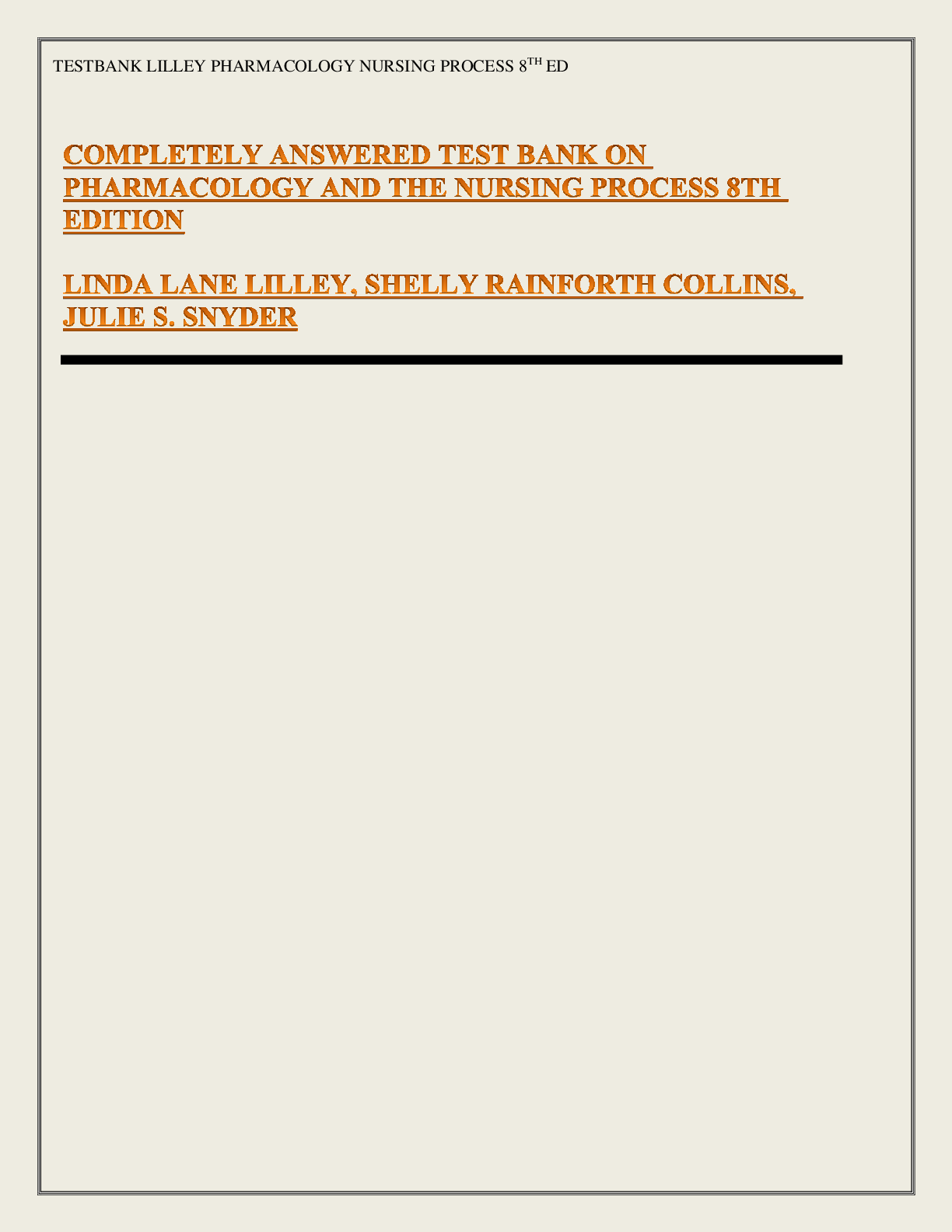
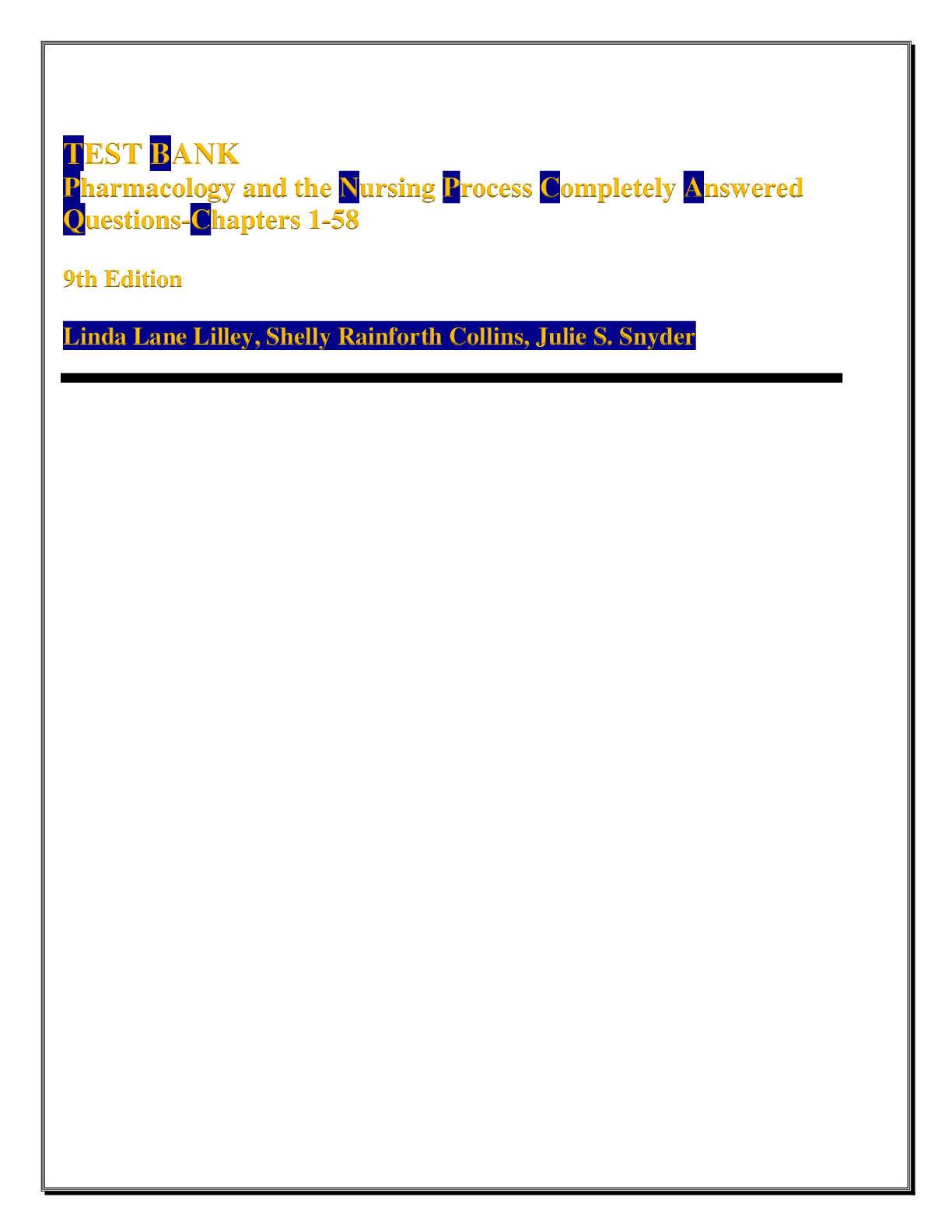
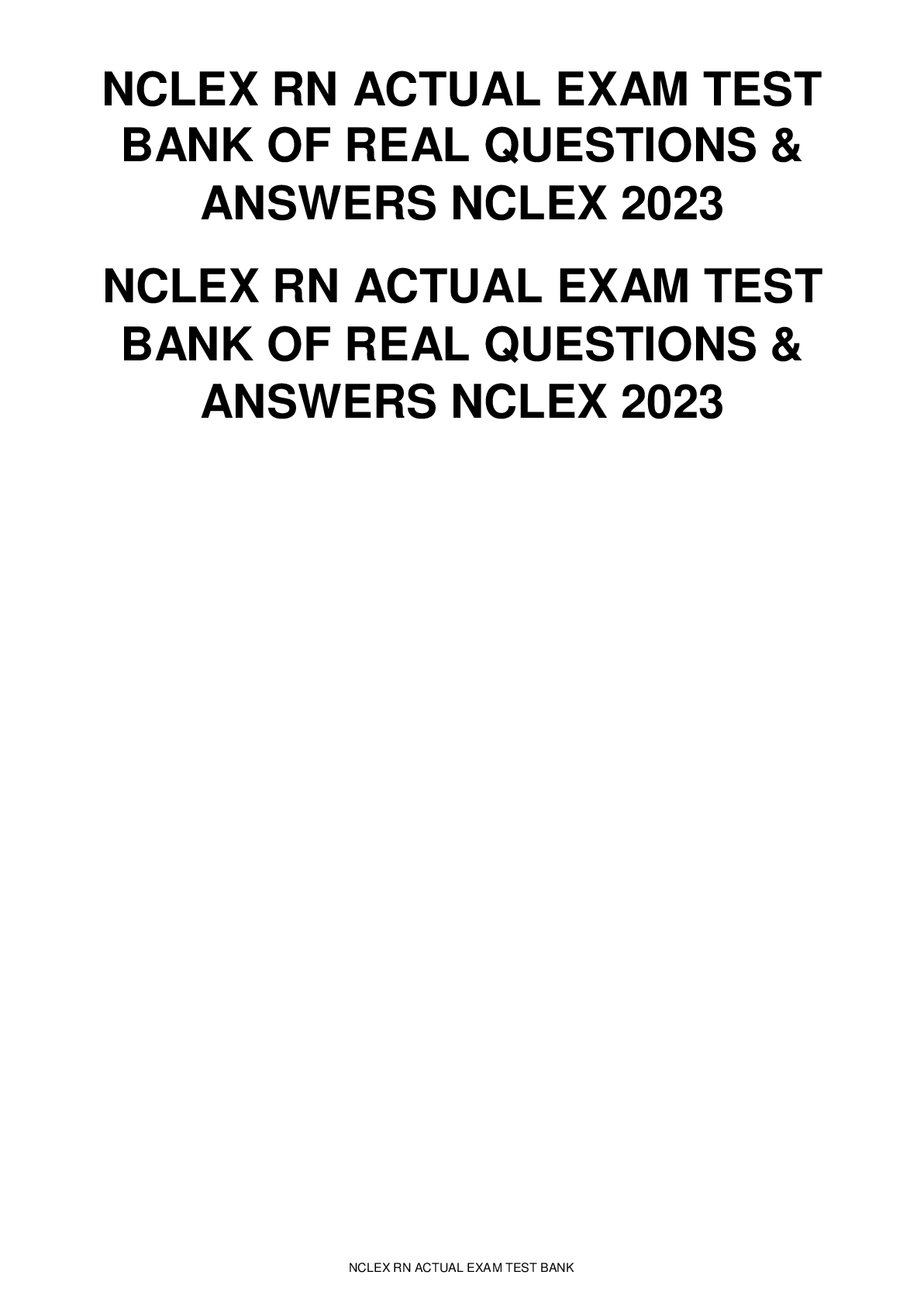
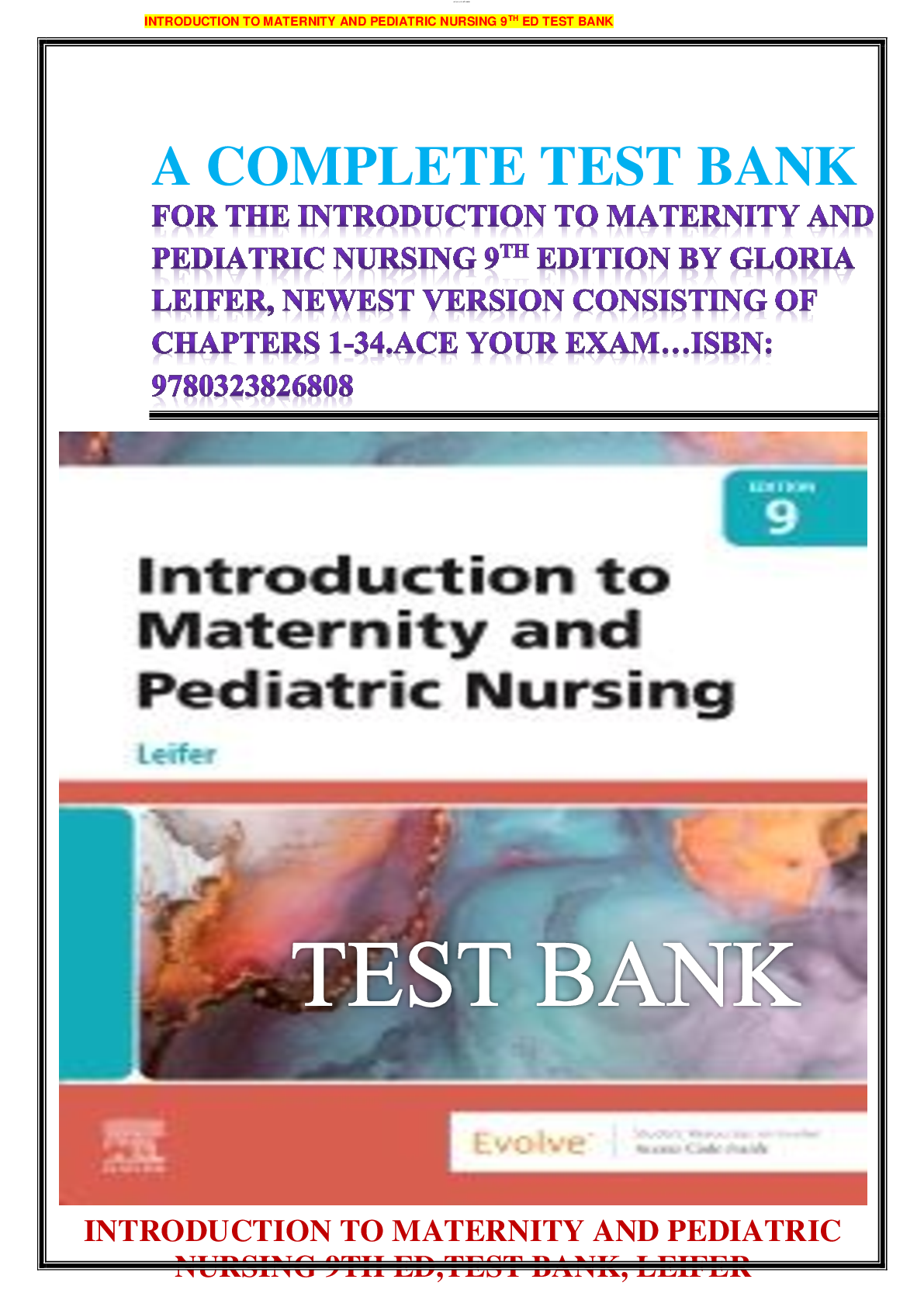
.png)






